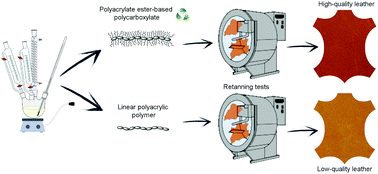Novel approaches in the use of polyacrylate ester-based polycarboxylates (PCEs) as leather retanning agents
Abstract
Retanning is one of the main stages for leather manufacturing. Linear anionic polyacrylates are widely used as retanning agents to minimize the use of phenolic and sulfone syntans, which are less environmentally friendly polymers. Nevertheless, their use as anionic retanning agents reduces the cationic charge of chrome tanned leathers, which influences the following stages: dyeing and fatliquoring. As a result, leathers with low dye uniformity, low colour intensity and rough grain are obtained. Polyacrylate ester-based polycarboxylates can be alternative retanning agents that do not cause these deficiencies in the dyeing and fatliquoring stages. However, the effects of their chemical structure on the final leather properties are not well understood yet. In this study, an attempt has been made to analyze the influence of the molecular weight of the PCE polyalcohol side chains in the final properties of retanned leather. PCEs with polyalcohol side chains of different molecular weights were synthesized, characterised and subjected to a biodegradability test. Retanning tests using PCEs were carried out in comparison to a commercial linear anionic polyacrylate. Different physical properties of the retanned leathers were analyzed. The internal collagen structure of the retanned leather was evaluated by scanning electron microscopy (SEM). The results revealed that PCEs with low molecular weight polyalcohol side chains were able to solve the problems of linear polyacrylates in dyeing and fatliquoring stages and improve the final leather softness, colour intensity and physical properties. This study proves that PCEs with low molecular weight polyalcohol side chains can act as a good biodegradable alternative to linear anionic polyacrylates as retanning agents.



 Please wait while we load your content...
Please wait while we load your content...